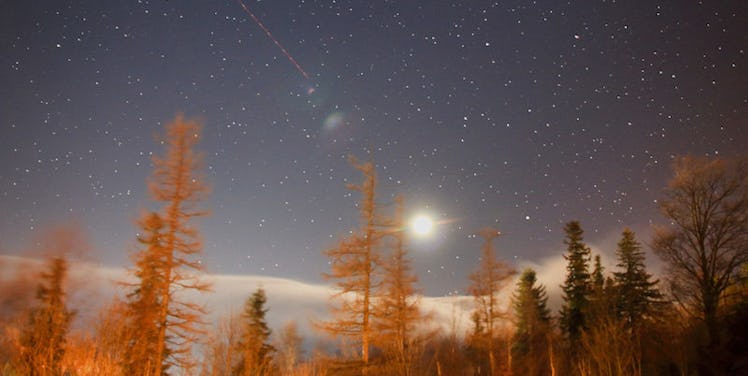
Here's Everything You Need To Know About The First Meteor Shower Of 2016
It may be the end of the weekend, but tonight marks the beginning of something else: the first meteor shower of 2016.
The Quadrantid meteor shower, first identified in the 1800s, is an annual shower caused by Earth's journey through the debris of an extinct comet. The comet, identified in 2003, was last seen intact above Southeast Asia more than 500 years ago. It is unclear when it broke apart.
The comet's debris, normally suspended in space, will enter the Earth's atmosphere and burn up, causing dozens of “shooting stars” that characterize a meteor shower.
Unlike most meteor showers, which peak over multiple days, the Quadrantids will light up the sky for just a few hours, starting around 3 am.
According to NASA, the Quadrantids are nearly as intense as the celebrated Perseids, albeit shorter. The agency claims,
During its peak, 60 to as many as 200 Quadrantid meteors can be seen per hour under perfect conditions.
What are those conditions? A dark sky, minimal light pollution and no cloud cover.
You can check out this interactive map to find the darkest area near you, and no need to worry about moonlight; it'll be but a sliver tonight.
If you want to watch, you'll need to head outside a little before 3 am and position yourself with a clear view of the Big Dipper constellation. Large, bright meteors will fall from an area in the sky close by and continue falling for several hours.
If clouds block your view tonight, or you refuse to wake up before the sun, worry not. You might be able to catch a shooting star or two over the next couple days.
Read more about the Quadrantids here.
Citations: The Quadrantid meteor shower peaks Sunday night Heres how to watch it (VOX)